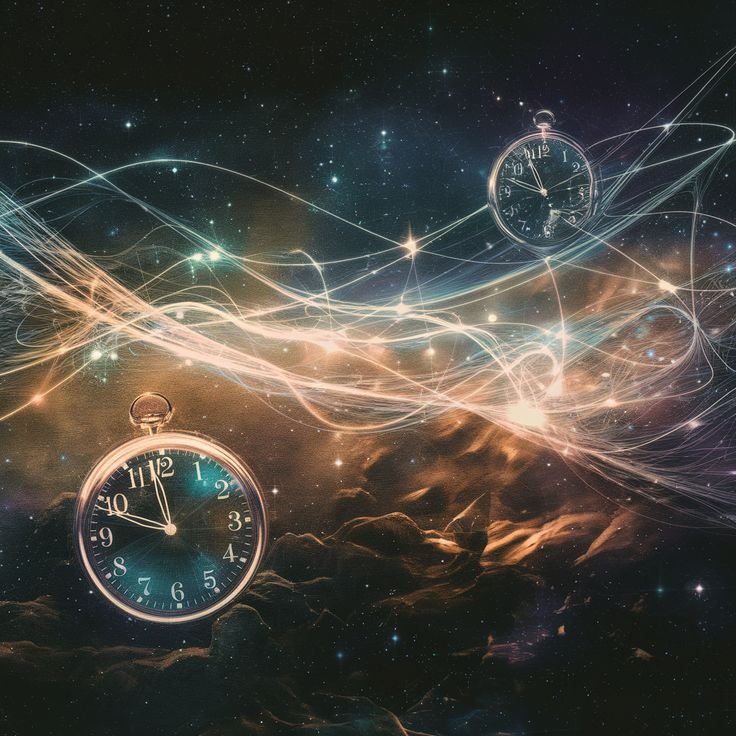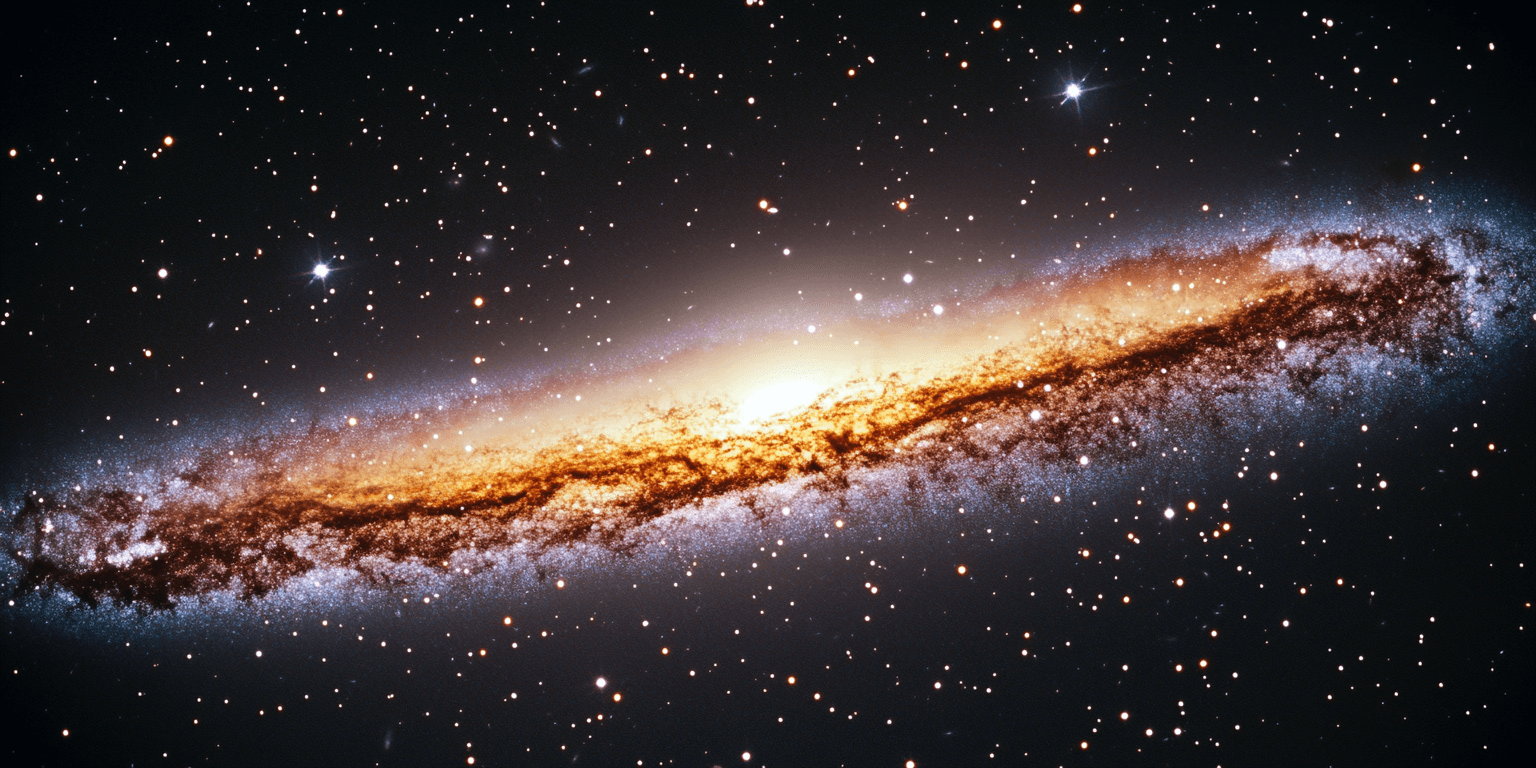19 Mind-Blowing Space Facts That Will Make You Feel Tiny
Have you ever felt tiny in the grand scheme of things? Well, prepare to feel even smaller. The universe is vast, mysterious, and mind-bogglingly complex. Yet, we’re only scratching the surface of what lies beyond our little blue planet.
From galaxies colliding to stars outshining entire solar systems, space is the ultimate humbler. So, let’s dive into these fascinating facts that remind us of our place in the cosmos and perhaps make you appreciate the stars a little more. Get ready for a cosmic ride!
Did you know? Every second we spend in the universe is defined by mysteries waiting to be unraveled.
1) The Observable Universe: More Than Meets the Eye
When we talk about the universe, we’re referring to everything, and when we say ‘everything,’ we mean a span of 93 billion light-years—just what we can see! Yeah, that’s right. Beyond this observable stretch, the universe could stretch forever, defying comprehension.
Feeling small yet? Good, because it’s these vast distances that make our cosmic neighborhood both intriguing and humbling. It’s like looking through a tiny window at a party you can never quite join.
2) A Day on Venus: Takes Longer Than a Year
If you think you’re having a long day, think again. Venus spins so slowly on its axis that one day there is longer than a year. It takes 243 Earth days for one full rotation while orbiting the Sun takes only 225!
Imagine being older than your brother because he is 20 years old but you are 20 DAYS old!

3) More Stars Than Grains of Sand
Next time you find yourself at the beach, take a moment to scoop up a handful of sand. Now imagine each speck representing a star. Remarkably, the universe has more stars than the grains of sand on Earth, with some estimates suggesting 100 billion to 200 billion galaxies, each brimming with stars.
The idea of each star possibly hosting a solar system is mind-blowing, isn’t it? This cosmic abundance certainly puts into perspective our daily concerns—they’re just dust in the wind or stars in the sky.
4) The Sun: King of the Solar System
Let’s talk about the monarch of our cosmic neighborhood—the Sun. It accounts for a staggering 99.86% of the solar system’s mass, dwarfing everything else, including Earth, that orbits it. Talk about being the center of attention!
Without it, life as we know it wouldn’t exist—but with so much mass, maybe that’s its way of hogging the spotlight. Remember, we’re just a speck on one of its tiny planets, mathematically insignificant yet beautifully essential.
5) Neutron Stars: Heavier Than Mountains
Imagine carrying around an ordinary teaspoon that weighs as much as Mount Everest. Seems impossible, right? Yet, a teaspoon-sized amount of neutron star material would weigh around 10 million tons. These cosmic entities are packed densely with neutrons, breaking the rules of physics we’re accustomed to.
It’s like trying to suss out how all those clowns fit into one tiny car—impossible to believe, but somehow, it works!
6) UY Scuti: The Gigantic Star
Meet UY Scuti, a superstar in its own right (quite literally). This colossal star is so vast it could fit 5 billion Suns or 1,700 Suns across its diameter. Now, that’s what we call star-power!
Next time you look up at the stars, remember, somewhere out there, one dwarfs the imagination. It’s the ultimate celestial show-off.
7) Watching the Past Through Light
Here’s a head-scratcher: when we gaze at galaxies far, far away, we’re essentially looking back in time. Light from the farthest galaxies took 13.4 billion years to reach us, revealing their ancient selves.
In a universe where today often reflects billions of years gone by, perhaps we should look at time as less of a straight line and more of an interstellar crochet pattern—tangling past and present beautifully together.
8) Fancy a cosmo-politan?
Did you know that there’s a massive cloud of alcohol in space? Located about 6,500 light-years away in the constellation Aquila, the cloud contains enough ethyl alcohol (the kind found in alcoholic beverages) to make 400 trillion trillion pints of beer. Taxi!
Sadly, it’s mixed with other nasty chemicals, so it’s not exactly drinkable! Guess we’ll go back to gazing up at all those cognac-stellations!
9) The Impending Galactic Collision
The Milky Way is set on a grand collision course with the Andromeda galaxy in about 4 billion years. The result? A monumental cosmic dance that will fuse both into one larger galaxy.
Lucky for us, amidst all this spiraling chaos, we won’t be here to witness the dance-off. Like most cosmic events, it will be both mesmerizingly beautiful and sublimely destructive!
10) The Stretch of Spaghettification
If you fancy turning into a long piece of pasta, get pulled into a black hole’s gravity. The resulting force stretches you into what’s charmingly dubbed ‘spaghettification.’
Possibly the universe’s most dramatic stretching routine, though not recommended for a new look. Better stick with Pilates.
11) The Ever-Expanding Universe
Our universe isn’t just big—it’s getting bigger! Expanding at a rate of 68 kilometers per second per megaparsec, galaxies race away from us like marathon sprinters.
It’s a cosmic expansion thrill-ride none of us can exit, reinforcing the fact that the entire universe is constantly on the move, in an unending marathon of growth.
12) The Storm on Jupiter
Jupiter’s Great Red Spot isn’t your typical storm—it’s a behemoth twice the size of Earth, unrelenting for at least four centuries!
It’s like an ever-raging interstellar tempest, giving a whole new meaning to the word ‘stormy.’ Here on Earth, we complain about a bad storm—but Jupiter laughs at our meteorological struggles!
13) Diamonds in the Sky
Imagine a planet made mostly of diamond. Stop dreaming—it might exist! Fifty-five Cancri e, a faraway exoplanet, could be one-third diamond.
While we can’t just swoop in and scoop it up, the existence of such planets adds allure to the astronomically rich beauty of space. Talk about a jewel box of cosmic wonders!
14) The Cosmic Web: A Galaxial Sprawl
If you think tangled webs are only made by spiders, think larger. The cosmic web consists of filaments and walls of galaxies stretching billions of light-years.
This fantastical network of galaxies presents a picture of the cosmos as an interconnected whole, confirming that complexity lies even in the macroscopic tapestry that makes our universe.
15) The Sun’s Capacity
Our Sun, already a giant, could accommodate one million Earths within it. Remarkable on its own, but one million Suns could fit within some of the largest stars we know!
It’s the kind of mathematical gymnastics that highlight how space is both incredibly vast and beautifully packed with brilliant stars.
16) Space: The Silent Frontier
Think space operas come with soundtracks? Think again. In space, no one can hear you scream because sound needs air to travel, and space is one big silent movie.
This eerie hush gives space an even more breathtaking allure—mystical beauty encapsulated in silence.
17) Patience, a Galactic Year
The shortest war lasted 38 minutes, while one galactic year—how long it takes the Solar System to orbit the center of the Milky Way—lasts about 225 million Earth years.
Our earthly dramas are but brief acts in this celestial theater, where timelines stretch beyond our wildest imagination.
18) Mysterious Dark Energy
Dark energy remains one of the universe’s biggest enigmas, making up 68% of its contents. It’s the dark horse driving cosmic expansion, yet entirely mysterious.
This force confirms the universe has secrets left to whisper, urging us onward with a tantalizing cosmic carrot of curiosity.
19) Road Trip to Proxima Centauri
Ever thought of leaving Earth in your trusty car? To reach Proxima Centauri, our closest stellar neighbor at 4.24 light-years away, it would take about 356 billion years driving at 70 mph.
For context, that’s longer than the combined age of the universe! During such a trip, the coffee stops alone would bankrupt you.
It’s a ludicrous thought, but in space, where vast vastness is both intriguing and prohibitive, such distances define our limitations and unending fascination.
Conclusion: Feeling Small Isn’t That Bad
Being but a speck in our universe may sound frightening. However, these incredible space facts remind us of our vast potential for discovery and the boundless wonders waiting to be unravelled.
So, as you sit back and gaze at the night sky, remember—the universe holds open doors to mysteries far beyond our current understanding. Dive into the cosmos, spark a conversation and engage with a universe that’s bigger and grander than our minds can fathom!
Happy stargazing!


